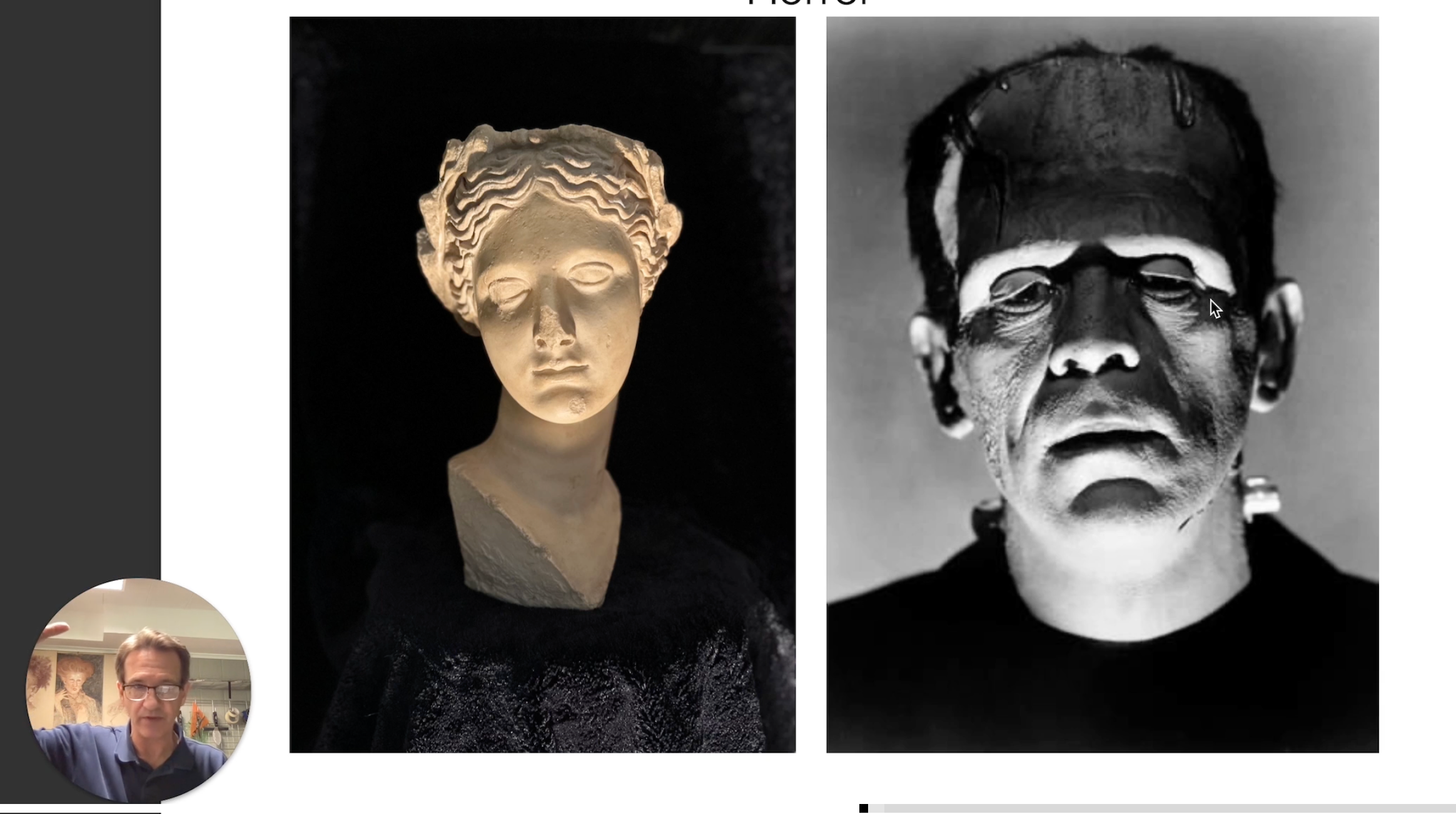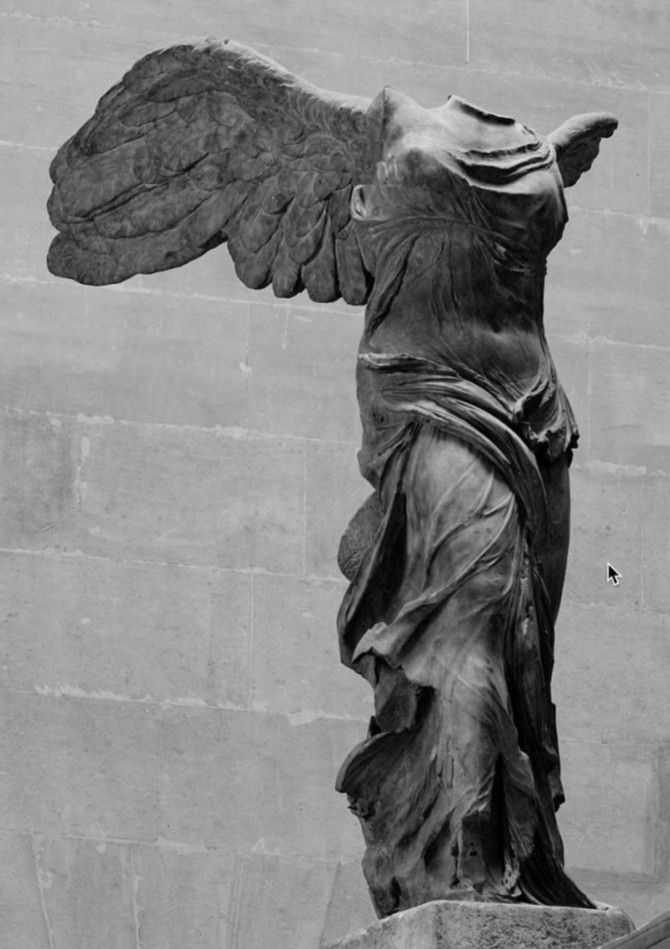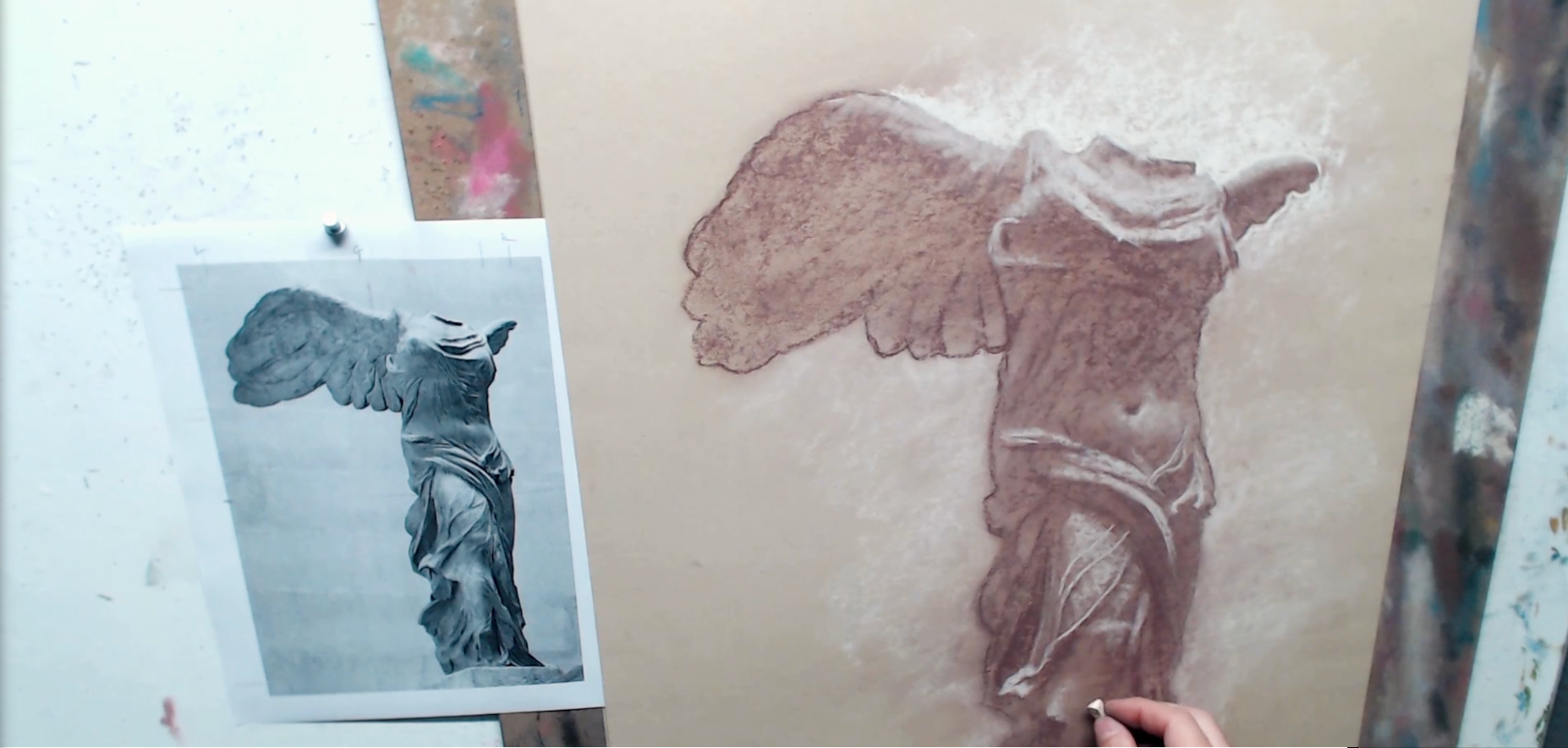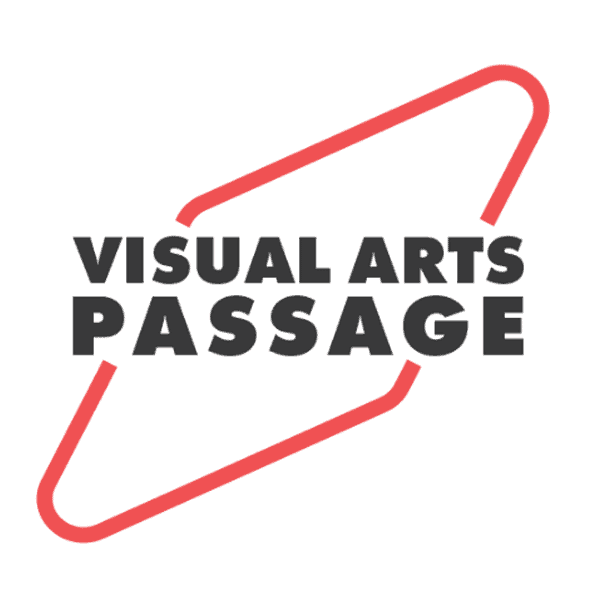The Art Foundations of Painting and Drawing: A Comprehensive Review on Painting Foundations
In this article, we will delve deep into the essential foundations of painting, from drawing fundamentals to composition and color theory, equipping you with the knowledge and skills necessary to transform your art journey and unleash your true potential as an artist and picture-maker.
Key Takeaways
- Gain essential skills and knowledge to create captivating artwork with John English’s Foundations of painting drawing on-demand workshop
- Explore the fundamentals of painting through hands-on demonstrations, figure drawing, landscape painting & working with mixed media.
- Master composition, form principles, color theory & perspective techniques for a professional portfolio that impresses!
Topics Covered

Whether you’re an aspiring illustrator or just keen to learn art fundamentals, getting a grasp on the foundations of painting and drawing is vital for your artistic development. The world of art is vast and detailed, but most students can see significant progress by focusing on eight key areas:
- Fundamentals of drawing
- Foundations of painting
- Composition
- Using reference for picture-making
- Principles of form
- Color theory
- Perspective
- Portfolio development
Sharpening your skills in these areas, guided by an amazing teacher, enables you to craft beautiful and captivating art that stands out.
Foundations of Drawing and Painting: A Review of a learn-by-doing on-demand workshop

Grasping the basics of drawing is fundamental for any artist, serving as the foundation for crafting realistic and visually appealing paintings. The drawing fundamentals include:
- Techniques such as mark making
- Understanding proportions and perspective
- Shading and highlighting
- Creating texture and depth
These essential building blocks for crafting beautiful and captivating drawings can be found in everyday objects.
Developing a toolkit of drawing fundamentals can empower you to easily solve many technical issues on the picture plane. By studying anatomy, perspective, and figure drawing, you can gain valuable knowledge that will help you create more realistic and dynamic drawings. The course “Fundamentals of Drawing,” taught by the inspiring instructor Maria Lia Malandrino, provides an excellent opportunity to explore the foundational principles of drawing in a structured way.
Anatomy is a great way of understanding the structure of any given thing, and with that knowledge, you can better capture the way those elements “stack” in your drawings. Additionally, understanding value can help you create more realistic and dynamic drawings. Anatomy can be incredibly beneficial for professional art, especially in entertainment art and life drawing since it can be used to accurately depict any living creature you may be drawing.
Foundations of painting

Painting is an exciting and expressive art form that allows artists to create visually stunning works of art. The essential elements of painting include:
- Color
- Composition
- Value
- Form
- Brushwork
- Perspective
- Anatomy
- Lighting
All of these elements are essential to creating captivating pieces that will leave a lasting impression on the viewer.
Each of these elements plays a crucial role in the overall success of a painting. For example:
- Color can be a powerful tool in creating contrast, depth, and emotion.
- Composition helps establish a sense of balance and harmony in the artwork.
- Brushwork adds texture and movement.
- Perspective creates a realistic sense of depth and distance.
Mastering these elements allows artists to produce visually appealing and harmonious paintings that make a difference.

Composition
The importance of composition in art cannot be overstated. It is the arrangement and organization of the various elements within an artwork, such as:
- lines
- shapes
- color
- values
- space
- structure
- textures
A well-thought-out composition is essential in creating a harmonious and engaging visual experience that draws the viewer’s eye and keeps them interested in the piece.
When selecting a composition, size, angle, perspective, and attention to foreground/background objects are all important factors to consider. Carefully arranging and blending various elements in your artwork can result in an overall look or effect that leaves a lasting impression, with a well-defined focal point enhancing the visual appeal.
In the Expressions, Acting & Composition subsection, you will uncover how to masterfully simplify human emotion with expression sheets and gain precious insight for crafting captivating expressions.
Using reference for picture-making

References play a significant role in art, serving as a source of inspiration or information to help artists understand and depict certain elements accurately. Whether it’s a photograph, a drawing, or any other visual representation, using references can bring your artwork to life, providing accurate depictions of colors, shapes, and textures. They can also help you comprehend the composition of your artwork and create a sense of depth and perspective.
Leveraging references can enable an artist to:
- Craft more realistic and precise artwork
- Understand the composition of the artwork and how to create a sense of depth and perspective
- Enhance the accuracy and realism of artworks, elevating their art to new heights.
Principles of form
The concept of form is an integral part of art, allowing artists to create the illusion of three-dimensional objects through the use of light and shadow. In essence, form is the representation of an object in three dimensions, taking into account its depth, height, and width. All objects are made up of basic shapes like squares, circles, and triangles, and understanding the principles of form can help artists create more realistic and visually appealing artwork.
Applying cross-contour lines for greater definition and refining forms leads to stunning drawings that truly come alive. Drawabox lessons are a fantastic way to build your drawing muscles and improve your ability to create convincing forms in your artwork. With practice and perseverance, artists can develop a deep understanding of form and its role in creating visually stunning artwork.
Color theory
Mastering the principles of color theory is essential for creating visually appealing and harmonious color schemes in your paintings. Color theory explores how colors work together and how they can influence our feelings and perceptions. Understanding the relationships between colors and their interaction enables artists to create not only visually appealing artwork but also pieces that evoke emotion and narrate a story.

Studying value in art can be immensely beneficial in honing your color selection skills. By understanding the impact of colors and how they can affect the overall mood and atmosphere of an artwork, you can create captivating and emotionally resonant pieces. For example, the digital painting by CGS student Raphaelle B., which uses green hues and pushes the saturation higher on the ghost dragon, demonstrates the power of color in creating visually striking artwork.
Perspective

Perspective is a crucial element of painting, as it can be utilized to create a realistic sense of depth and distance in a painting. By understanding the principles of perspective, such as horizon lines and vanishing points, artists can create stunning illusions of three dimensions in their two-dimensional artwork. Perspective adds a sense of depth and space, creating a realistic representation of the scene that truly brings it to life.
To master perspective, artists should study the essential techniques and principles that govern this fascinating aspect of art. Learning how objects appear to diminish in size as they recede from the viewer and effective use of horizon lines and vanishing points enable artists to produce not only visually appealing but also accurate representations of the world around us.
Portfolio development
Creating a professional and visually appealing portfolio is essential for showcasing your artistic skills and attracting potential clients or employers. Portfolio development involves:
- Creating and organizing a collection of work or projects that demonstrate your talents, skills, and previous experiences
- Highlighting your abilities and accomplishments
- Making it an invaluable tool in furthering your career as an artist.
CG Spectrum’s career services provide invaluable support and feedback on students’ portfolios or showreels, assistance with resume and job searches, and exclusive career workshops and webinars featuring top industry leaders. Leveraging these resources and concentrating on portfolio development helps artists compile a collection of work that not only displays their skills and achievements but also distinguishes them in the competitive art world.
Learn from hands-on demonstrations
In addition to the essential foundations of painting, this article also includes practical demonstrations and examples of various painting techniques to help bring these concepts to life. By exploring:
- Head drawing
- Figure drawing
- Landscape painting
- Working with mixed media
Artists who want to learn can gain hands-on experience and a deeper understanding of the techniques and principles of painting on their art journey, further enhancing their skills and abilities.
This article provides an in-depth look at the fundamentals of painting, from the basics of
Head drawing tutorial

Learning how to accurately draw the human head, including facial features and proportions, is essential for creating realistic and expressive portraits. Studying anatomy, perspective, and shading equips artists with valuable knowledge to create more realistic and dynamic head drawings, capturing the essence and personality of their subjects.
For those looking to learn to draw and improve their head drawing skills, there are plenty of step-by-step tutorials and courses available to help beginners get started. By practicing regularly and applying the principles of head drawing, artists can create stunning portraits that capture the likeness and character of their subjects with accuracy and precision.
figure drawing tutorial

Understanding the principles of human anatomy is crucial for accurately depicting the human figure in various poses and movements. Figure drawing is an amazing art form that allows you to capture the proportions, anatomy, and movement of the human body, creating stunning and lifelike representations of the human form.
Studying human anatomy enables artists to:
- Craft realistic and accurate depictions of the human figure in their drawings
- Effortlessly capture the essence and movement of their subjects
- Bring their artwork to life with accuracy and precision, whether they’re working on a dynamic action scene or a tranquil yoga pose.
Understanding human anatomy and the principles of figure drawing is essential for artists to create lifelike and captivating artwork.
landscape painting demonstration and presentation

Landscape painting is a beautiful and expressive art form that allows artists to explore the beauty of the natural world, from majestic mountains to tranquil valleys and sparkling bodies of water. Mastering the techniques and principles of landscape painting, including composition, color, and perspective, allows artists to create visually stunning outdoor scenes that captivate viewers and transport them to the breathtaking locations depicted in the artwork.
Color is essential in landscape painting to create a sense of depth and atmosphere, as well as to evoke a mood or feeling. Perspective, on the other hand, adds a sense of depth and space, creating a realistic representation of the scene that brings it to life. By studying and applying these principles, artists can create stunning landscape paintings that truly capture the beauty and essence of the natural world.
working with mixed media, an extension of the landscape painting tutorial
Working with mixed media is an exciting and innovative way to explore the possibilities of combining different artistic mediums, such as watercolor, acrylic, and oil paint, to create unique and visually interesting artwork. Mixed media allows artists to experiment with various techniques and materials, resulting in one-of-a-kind pieces that showcase their creativity and versatility.
Experimenting with various materials and techniques allows artists to craft artwork that is more visually engaging than traditional art forms. Some examples of mixed media artwork include stunning paintings that incorporate photography, captivating sculptures that incorporate paint, and creative collages that incorporate sculpture. The possibilities are endless, and the only limit is your imagination.
Summary
Mastering the art of painting requires a strong foundation in the essential elements of drawing, composition, form, color theory, perspective, and portfolio development. By practicing and honing your skills in these areas and exploring hands-on demonstrations, you can transform your art journey and create visually stunning and captivating pieces that leave a lasting impression. Remember, the key to success is perseverance, dedication, and a willingness to learn and grow, so don’t be afraid to dive in and explore the fascinating world of painting.
Key Takeaways
- Gain essential skills and knowledge to create captivating artwork with John English’s Foundations of painting drawing on-demand workshop
- Explore the fundamentals of painting through hands-on demonstrations, figure drawing, landscape painting & working with mixed media.
- Master composition, form principles, color theory & perspective techniques for a professional portfolio that impresses!
Topics Covered

Whether you’re an aspiring illustrator or just keen to learn art fundamentals, getting a grasp on the foundations of painting and drawing is vital for your artistic development. The world of art is vast and detailed, but most students can see significant progress by focusing on eight key areas:
- Fundamentals of drawing
- Foundations of painting
- Composition
- Using reference for picture-making
- Principles of form
- Color theory
- Perspective
- Portfolio development
Sharpening your skills in these areas, guided by an amazing teacher, enables you to craft beautiful and captivating art that stands out.
Foundations of Drawing and Painting: A Review of a learn-by-doing on-demand workshop

Grasping the basics of drawing is fundamental for any artist, serving as the foundation for crafting realistic and visually appealing paintings. The drawing fundamentals include:
- Techniques such as mark making
- Understanding proportions and perspective
- Shading and highlighting
- Creating texture and depth
These essential building blocks for crafting beautiful and captivating drawings can be found in everyday objects.
Developing a toolkit of drawing fundamentals can empower you to easily solve many technical issues on the picture plane. By studying anatomy, perspective, and figure drawing, you can gain valuable knowledge that will help you create more realistic and dynamic drawings. The course “Fundamentals of Drawing,” taught by the inspiring instructor Maria Lia Malandrino, provides an excellent opportunity to explore the foundational principles of drawing in a structured way.
Anatomy is a great way of understanding the structure of any given thing, and with that knowledge, you can better capture the way those elements “stack” in your drawings. Additionally, understanding value can help you create more realistic and dynamic drawings. Anatomy can be incredibly beneficial for professional art, especially in entertainment art and life drawing since it can be used to accurately depict any living creature you may be drawing.
Foundations of painting

Painting is an exciting and expressive art form that allows artists to create visually stunning works of art. The essential elements of painting include:
- Color
- Composition
- Value
- Form
- Brushwork
- Perspective
- Anatomy
- Lighting
All of these elements are essential to creating captivating pieces that will leave a lasting impression on the viewer.
Each of these elements plays a crucial role in the overall success of a painting. For example:
- Color can be a powerful tool in creating contrast, depth, and emotion.
- Composition helps establish a sense of balance and harmony in the artwork.
- Brushwork adds texture and movement.
- Perspective creates a realistic sense of depth and distance.
Mastering these elements allows artists to produce visually appealing and harmonious paintings that make a difference.

Composition
The importance of composition in art cannot be overstated. It is the arrangement and organization of the various elements within an artwork, such as:
- lines
- shapes
- color
- values
- space
- structure
- textures
A well-thought-out composition is essential in creating a harmonious and engaging visual experience that draws the viewer’s eye and keeps them interested in the piece.
When selecting a composition, size, angle, perspective, and attention to foreground/background objects are all important factors to consider. Carefully arranging and blending various elements in your artwork can result in an overall look or effect that leaves a lasting impression, with a well-defined focal point enhancing the visual appeal.
In the Expressions, Acting & Composition subsection, you will uncover how to masterfully simplify human emotion with expression sheets and gain precious insight for crafting captivating expressions.
Using reference for picture-making

References play a significant role in art, serving as a source of inspiration or information to help artists understand and depict certain elements accurately. Whether it’s a photograph, a drawing, or any other visual representation, using references can bring your artwork to life, providing accurate depictions of colors, shapes, and textures. They can also help you comprehend the composition of your artwork and create a sense of depth and perspective.
Leveraging references can enable an artist to:
- Craft more realistic and precise artwork
- Understand the composition of the artwork and how to create a sense of depth and perspective
- Enhance the accuracy and realism of artworks, elevating their art to new heights.
Principles of form
The concept of form is an integral part of art, allowing artists to create the illusion of three-dimensional objects through the use of light and shadow. In essence, form is the representation of an object in three dimensions, taking into account its depth, height, and width. All objects are made up of basic shapes like squares, circles, and triangles, and understanding the principles of form can help artists create more realistic and visually appealing artwork.
Applying cross-contour lines for greater definition and refining forms leads to stunning drawings that truly come alive. Drawabox lessons are a fantastic way to build your drawing muscles and improve your ability to create convincing forms in your artwork. With practice and perseverance, artists can develop a deep understanding of form and its role in creating visually stunning artwork.
Color theory
Mastering the principles of color theory is essential for creating visually appealing and harmonious color schemes in your paintings. Color theory explores how colors work together and how they can influence our feelings and perceptions. Understanding the relationships between colors and their interaction enables artists to create not only visually appealing artwork but also pieces that evoke emotion and narrate a story.

Studying value in art can be immensely beneficial in honing your color selection skills. By understanding the impact of colors and how they can affect the overall mood and atmosphere of an artwork, you can create captivating and emotionally resonant pieces. For example, the digital painting by CGS student Raphaelle B., which uses green hues and pushes the saturation higher on the ghost dragon, demonstrates the power of color in creating visually striking artwork.
Perspective

Perspective is a crucial element of painting, as it can be utilized to create a realistic sense of depth and distance in a painting. By understanding the principles of perspective, such as horizon lines and vanishing points, artists can create stunning illusions of three dimensions in their two-dimensional artwork. Perspective adds a sense of depth and space, creating a realistic representation of the scene that truly brings it to life.
To master perspective, artists should study the essential techniques and principles that govern this fascinating aspect of art. Learning how objects appear to diminish in size as they recede from the viewer and effective use of horizon lines and vanishing points enable artists to produce not only visually appealing but also accurate representations of the world around us.
Portfolio development
Creating a professional and visually appealing portfolio is essential for showcasing your artistic skills and attracting potential clients or employers. Portfolio development involves:
- Creating and organizing a collection of work or projects that demonstrate your talents, skills, and previous experiences
- Highlighting your abilities and accomplishments
- Making it an invaluable tool in furthering your career as an artist.
CG Spectrum’s career services provide invaluable support and feedback on students’ portfolios or showreels, assistance with resume and job searches, and exclusive career workshops and webinars featuring top industry leaders. Leveraging these resources and concentrating on portfolio development helps artists compile a collection of work that not only displays their skills and achievements but also distinguishes them in the competitive art world.
Learn from hands-on demonstrations
In addition to the essential foundations of painting, this article also includes practical demonstrations and examples of various painting techniques to help bring these concepts to life. By exploring:
- Head drawing
- Figure drawing
- Landscape painting
- Working with mixed media
Artists who want to learn can gain hands-on experience and a deeper understanding of the techniques and principles of painting on their art journey, further enhancing their skills and abilities.
This article provides an in-depth look at the fundamentals of painting, from the basics of
Head drawing tutorial

Learning how to accurately draw the human head, including facial features and proportions, is essential for creating realistic and expressive portraits. Studying anatomy, perspective, and shading equips artists with valuable knowledge to create more realistic and dynamic head drawings, capturing the essence and personality of their subjects.
For those looking to learn to draw and improve their head drawing skills, there are plenty of step-by-step tutorials and courses available to help beginners get started. By practicing regularly and applying the principles of head drawing, artists can create stunning portraits that capture the likeness and character of their subjects with accuracy and precision.
figure drawing tutorial

Understanding the principles of human anatomy is crucial for accurately depicting the human figure in various poses and movements. Figure drawing is an amazing art form that allows you to capture the proportions, anatomy, and movement of the human body, creating stunning and lifelike representations of the human form.
Studying human anatomy enables artists to:
- Craft realistic and accurate depictions of the human figure in their drawings
- Effortlessly capture the essence and movement of their subjects
- Bring their artwork to life with accuracy and precision, whether they’re working on a dynamic action scene or a tranquil yoga pose.
Understanding human anatomy and the principles of figure drawing is essential for artists to create lifelike and captivating artwork.
landscape painting demonstration and presentation

Landscape painting is a beautiful and expressive art form that allows artists to explore the beauty of the natural world, from majestic mountains to tranquil valleys and sparkling bodies of water. Mastering the techniques and principles of landscape painting, including composition, color, and perspective, allows artists to create visually stunning outdoor scenes that captivate viewers and transport them to the breathtaking locations depicted in the artwork.
Color is essential in landscape painting to create a sense of depth and atmosphere, as well as to evoke a mood or feeling. Perspective, on the other hand, adds a sense of depth and space, creating a realistic representation of the scene that brings it to life. By studying and applying these principles, artists can create stunning landscape paintings that truly capture the beauty and essence of the natural world.
working with mixed media, an extension of the landscape painting tutorial
Working with mixed media is an exciting and innovative way to explore the possibilities of combining different artistic mediums, such as watercolor, acrylic, and oil paint, to create unique and visually interesting artwork. Mixed media allows artists to experiment with various techniques and materials, resulting in one-of-a-kind pieces that showcase their creativity and versatility.
Experimenting with various materials and techniques allows artists to craft artwork that is more visually engaging than traditional art forms. Some examples of mixed media artwork include stunning paintings that incorporate photography, captivating sculptures that incorporate paint, and creative collages that incorporate sculpture. The possibilities are endless, and the only limit is your imagination.
Summary
Mastering the art of painting requires a strong foundation in the essential elements of drawing, composition, form, color theory, perspective, and portfolio development. By practicing and honing your skills in these areas and exploring hands-on demonstrations, you can transform your art journey and create visually stunning and captivating pieces that leave a lasting impression. Remember, the key to success is perseverance, dedication, and a willingness to learn and grow, so don’t be afraid to dive in and explore the fascinating world of painting.
26 PARTS
Color Theory
This course equips you with a robust understanding of color theory. Learn and master your use of color to elevate the mood, emotion, and impact of your artwork.










Leave a Reply
Want to join the discussion?Feel free to contribute!